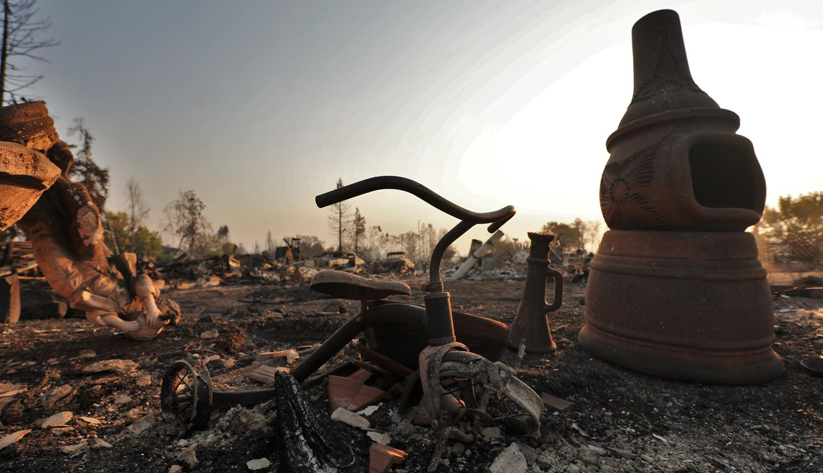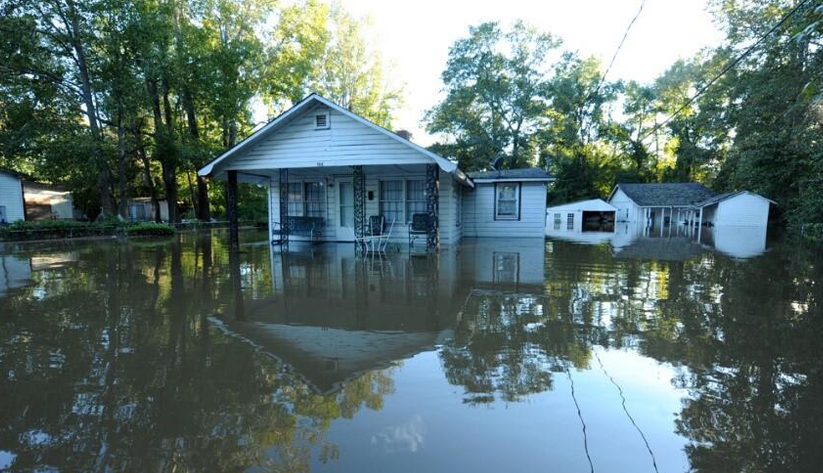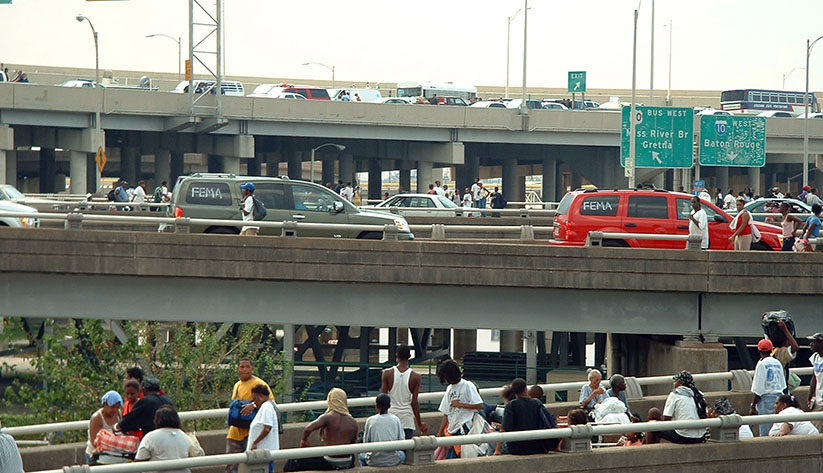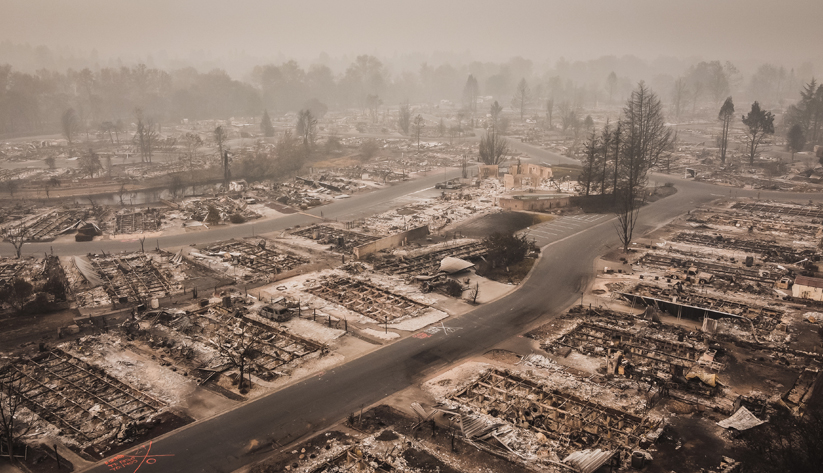
A broad scientific consensus holds that climate change is raising temperatures and sea levels and causing more intense storms, floods, droughts, and heat waves, among other effects.
Organizations such as the Pentagon, publicly traded corporations, and central banks are incorporating climate risks into long-range planning. Increasingly, so is the Federal Reserve System, including the Federal Reserve Bank of Atlanta. As it has become clear that climate change will profoundly affect economic activity and financial risk, the Federal Reserve is seeking to thoroughly understand those implications.
Climate change is one of three fundamental forces transforming the economy in the 21st century, along with an aging population and advancing technology, San Francisco Fed economist Glenn Rudebusch wrote in 2019. Fed officials including Governor Lael Brainard have said climate change influences all areas of the Fed's work: monetary policy, financial stability, financial regulation and supervision, community and consumer affairs, and payments.
The following initiatives represent examples of how the Fed is intensifying efforts to learn how climate change could create financial risk and shape economic conditions:
- In November, the Federal Reserve Board of Governors included—for the first time—sections on climate risks in its Financial Stability Report and Supervision and Regulation Report. Also, participants in the November 4–5 Federal Open Market Committee meeting noted that climate change poses important challenges to financial stability.
- The Board of Governors announced on December 15 that it has become a member of the Network of Central Banks and Supervisors for Greening the Financial System (NGFS). By bringing together central banks and supervisory authorities from around the world, NGFS supports the exchange of ideas, research, and best practices on the development of environment and climate risk management for the financial sector.
- A multidisciplinary group of professionals across the Federal Reserve System convenes monthly to share climate information. Several Atlanta Fed researchers and bank supervision and regulation experts are part of that group.
- A team of Federal Reserve financial risk experts communicates regularly with counterparts in foreign financial regulatory agencies. Many financial authorities in other countries already consider climate risk in their formal assessments of banks, something U.S. regulators don't yet do.
- Fed economists are researching the implications of climate change. The Federal Reserve Bank of San Francisco in November 2019 began a series of research seminars on climate economics. Led by Rudebusch, the San Francisco Reserve Bank has produced research on various economic effects of a changing climate. The Richmond Fed is also publishing research, and the New York Fed in November launched a monthly virtual climate seminar series.

The Atlanta Fed's Saba Haq
Studying climate risks for financial institutions
Saba Haq, a senior bank examiner in the Atlanta Fed's Miami Branch, is a member of a System-wide, 20-person team that seeks to identify emerging risks to financial institutions. While climate risk is not yet explicitly incorporated into Fed bank examinations, the issue is unquestionably on the group's agenda.
"We're doing a lot of learning at this point," Haq said.
Haq and her colleagues are studying the concrete ways climate risk creates concerns for individual lending institutions and, in turn, for the larger financial system. U.S. regulators are also following risk-management methodologies other central banks employ, Haq said. For instance, they are examining the ways the Bank of England plans to assess climate risk, including in bank stress tests.
The Fed Financial Stability Report broadly describes climate risk "transmission" to lenders and the financial system. The report explains that storms, floods, droughts, or wildfires can upend future economic conditions or quickly change the value of real assets, such as property, or financial assets, like stocks, bonds, and loans.
"Moreover," according to the report, "in the presence of rapid shifts in public perceptions of risk, chronic hazards (like a slow rise in sea levels) have the potential to produce similar abrupt repricing events. These repricing events and direct losses associated with climate hazards can result in an increased frequency and severity of financial shocks."
Sixth District likely to feel economic effects of climate in numerous ways
The Atlanta Fed's district, encompassing the Southeast, could feel various economic effects of a changing climate. It's warm, for one, and the six-state district encompasses nearly 2,000 miles of ocean and Gulf of Mexico coastline. The region suffered numerous destructive storms in 2020—a year that produced a record number of named Atlantic storms—and will likely see more damaging hurricanes in coming years. Such storms, of course, cause extensive injuries and fatalities, property damage, and additional economic disruptions such as halting offshore oil and gas production.
Then there are the financing risks. Expensive coastal real estate in the Southeast—much of it in Florida—secures billions in loans. If coastal real estate values rapidly decline amid flooding and more violent hurricanes—the sort of "repricing events" noted in the financial stability report—then loans tied to that property could make borrowers less likely to repay and, in turn, create severe risks for lenders.
Follow-on effects could cascade from there. For instance, the sudden exposure of these lenders might create what economists and financial professionals call counterparty risk—increased concerns for others doing business with those firms. Those concerns can lead financial markets to freeze up as they did during the Great Recession, when liquidity evaporated as financial firms worried that their trading partners might have large exposure to assets tied to mortgage-backed securities.
Another concern is that a climate event could lead to a sudden repricing of risk. Atlanta Fed economist Chris Cunningham points to terrorism insurance after September 11, 2001, as an example of what could happen after, say, a category 5 hurricane. Before 9/11, terrorism insurance was inexpensive and easily available because the risk of attack was considered low. However, after the attacks in New York and Washington, DC, terrorism insurance was essentially unavailable at any price. Consequently, the federal government was compelled to offer terrorism insurance until the marketplace devised a feasible way to supply it, Cunningham explained.

The Atlanta Fed's Chris Cunningham.
Photo by David Fine
So while a catastrophic storm could not only wreak destruction, it could also unsettle the insurance market to the degree that rebuilding becomes impossible. Moreover, other financial spillovers could happen if a climate-related event causes insolvency for a major reinsurer, which is a firm that sells insurance to insurance companies to insulate them from the risk of paying out huge numbers of claims all at once.
Some changes already apparent
In fact, some signs indicate that climate risk is already having an impact on coastal real estate finance. Tulane University researcher Jesse Keenan, formerly a visiting scholar at the San Francisco Fed, found that locally focused real estate lenders in southeastern Atlantic and Gulf regions securitize—or pass along to the secondary market—a bigger share of loans than do other lenders, apparently based on their superior knowledge of local conditions such as climate risk. For banks, the goal behind such securitizing is to get the risk off their books.
Another effect is what Keenan termed "climate gentrification." Basically, that happens when low-lying places become less inviting or uninhabitable because of flooding, making higher ground prohibitively expensive to all but the wealthy. Some elevated parts of Miami, Keenan notes, have already become unaffordable to less affluent people.
An associate professor in Tulane's architecture school, Keenan cites earlier research in observing that even with large public investments in projects such as sea walls, sea-level rise is expected to displace millions of coastal residents in the United States during the 21st century.
Without question, forecasting something as vast and uncertain as the macroeconomic implications of climate change is difficult. Still, economists seem to be making strides. For example, by examining changes in temperature by season and across states, Richmond Fed economist Toan Phan and his coauthors, Riccardo Colacito of the University of North Carolina and Bridget Hoffmann of the Inter-American Development Bank, find that rising temperatures could reduce U.S. economic growth by as much as a third by 2100. Their research is summarized in an August 2018 Economic Brief from the Richmond Fed.
Impact varies by region
Research suggests that economic effects will vary across the world and within the United States. Climatic conditions and the resources available to mitigate and adapt to climate change differ, the Richmond Fed publication explains.
Although small individual areas might be hotter, the South experiences the highest average temperatures in the country (see the map). Thus, the economies of southern states are the most sensitive to changes in temperatures as hotter weather tends to sap labor productivity, the Richmond Fed authors found. For example, previous research has shown that outdoor temperatures above 90 degrees lower production at automotive assembly plants, which have over the years migrated to the Southeast.
There's no shortage of concerns. Yet for all the dire consequences of climate change, new economic opportunities could spring from mitigation and adaptation efforts. To cite one, green energy is a growth industry. Two of the top three fastest-growing occupations between 2019 and 2029 will be wind turbine service technicians and solar photovoltaic installers, according to forecasts from the U.S. Bureau of Labor Statistics. Plus, public and private entities are likely to invest heavily in infrastructure designed to withstand more severe weather.









